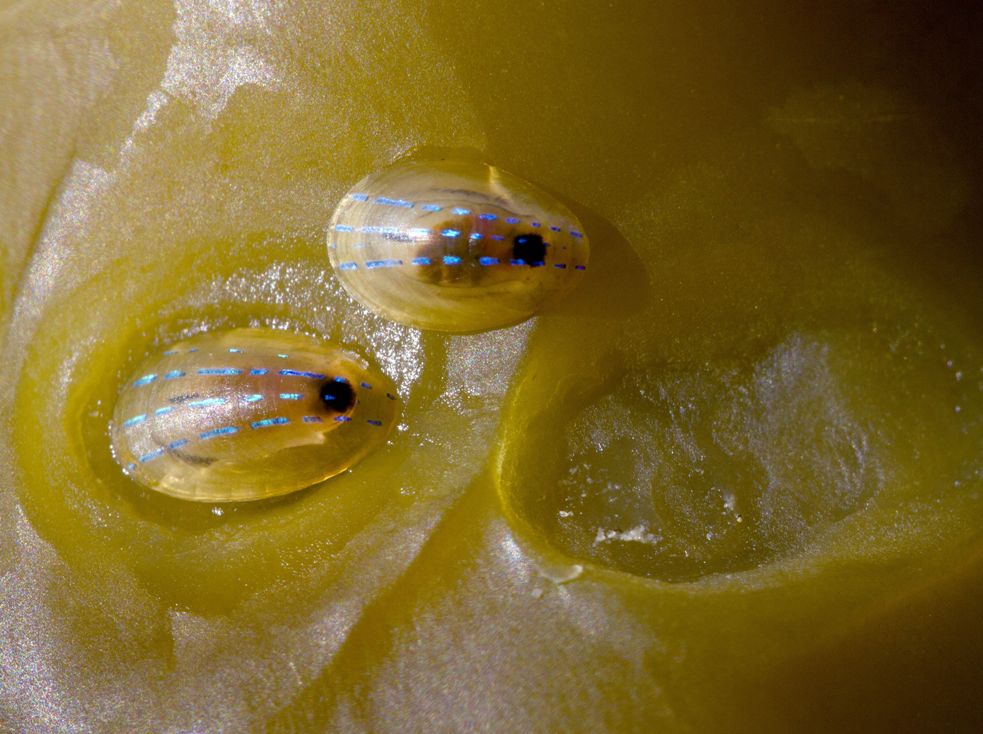Invasion History
First Non-native North American Tidal Record:First Non-native West Coast Tidal Record:
First Non-native East/Gulf Coast Tidal Record:
General Invasion History:
Patella pellucida is native to European rocky shores from Norway and Iceland to Spain and Portugal, but is absent from the Mediterranean and Baltic. This limpet is strongly associated with Laminarian kelp species (Hayward and Ryalnd 1990; MarLin 2013). Its only record from North American waters is a single shell, found on a beach in Newport, Rhode Island (Morse 1918).
North American Invasion History:
Invasion History on the East Coast:
Patella pellucida (as Helcion pellucidum) is known on the East Coast, from a single shell. It was ~1 mm long and was found in the sand at Easton's Beach, Newport, Rhode Island (Morse 1918). This could have been a dead shell, transported in ballast sand, or from a living animal in adjacent kelp, perhaps transported as a larva in ballast water. However, there are no further records of this limpet in East Coast waters (Coomans 1962).
Description
Patella pellucida is a small limpet snail with a flattened cone-shaped oval shell, with the apex at the anterior end. The posterior profile of the shell is a convex curve. The shell is thin and horn-colored, with concentric growth lines and marked by 2-8 bright broken blue-green rays. This mollusk reaches 30 mm in length. This limpet occurs primarily on kelp (Laminaria spp.) in the lower intertidal. Description from Hayward and Ryland 1990 and MarLin 2013.
Taxonomy
Taxonomic Tree
| Kingdom: | Animalia | |
| Phylum: | Mollusca | |
| Class: | Gastropoda | |
| Subclass: | Prosobranchia | |
| Order: | Archaeogastropoda | |
| Superfamily: | Patelloidea | |
| Family: | Patellidae | |
| Genus: | Patella | |
| Species: | pellucida |
Synonyms
Helcion pellucidus (None, None)
Potentially Misidentified Species
Ecology
General:
Patella pellucida is a marine limpet snail, which is associated with algae and kelp (Laminaria spp.) on rocky shores in relatively cold waters. Animals are mature at about 5 mm. Sexes are separate, eggs are shed singly, and fertilization is external. The eggs hatch into a trochophore, which develops into a veliger and then settles after a few weeks. Young snails settle first on coralline algae (Lithothamnion spp.), and then move to the small red alga Mastocarpus stellatus, and later to the brown alga Himanthalia elongata, and then at a size of about 3mm to kelp (Laminaria spp.) (MarLin 2013).
Food:
Seaweeds
Trophic Status:
Herbivore
HerbHabitats
| General Habitat | Rocky | None |
| Salinity Range | Polyhaline | 18-30 PSU |
| Salinity Range | Euhaline | 30-40 PSU |
| Tidal Range | Subtidal | None |
| Tidal Range | Low Intertidal | None |
| Tidal Range | Mid Intertidal | None |
| Vertical Habitat | Epibenthic | None |
Tolerances and Life History Parameters
| Minimum Length (mm) | 5 | Size at maturity (MarLin 2013) |
| Maximum Length (mm) | 20 | Hayward and Ryland 1990 |
| Broad Temperature Range | None | Cold temperate-Warm temperate |
| Broad Salinity Range | None | Polyhaline-Euhaline |
General Impacts
Patella pellucida is not established beyond its native range in Europe.Regional Distribution Map
Non-native
Native
Cryptogenic
Failed
Occurrence Map
References
Academy of Natural Sciences of Philadelphia 2002-2024a Malacology Collection Search. <missing URL>Appeltans, W. et al. 2011-2015 World Registry of Marine Species. <missing URL>
Coomans, H. E. (1962) The marine mollusk fauna of the Virginian area as a basis for defining zoogeographical provinces., Beaufortia 9(98): 83-104
Harvard Museum of Comparative Zoology 2008-2021 Museum of Comparative Zoology Collections database- Malacology Collection. <missing URL>
Hayward, P.J.; Ryland, J. S. (1990) <missing title>, 2 Clarendon Press, Oxford. Pp. <missing location>
MarLin- Marine Life Information Network 2006-2024 MarLin- Marine Life Information Network. <missing URL>
Morse, Edward S. (1918) A European mollusk, Helcion pellucidum, never before recorded in America, Nautilus 32: 77
Rosenberg, Gary 1995-2023 Malacolog 4.1. http://www.malacolog.org/
